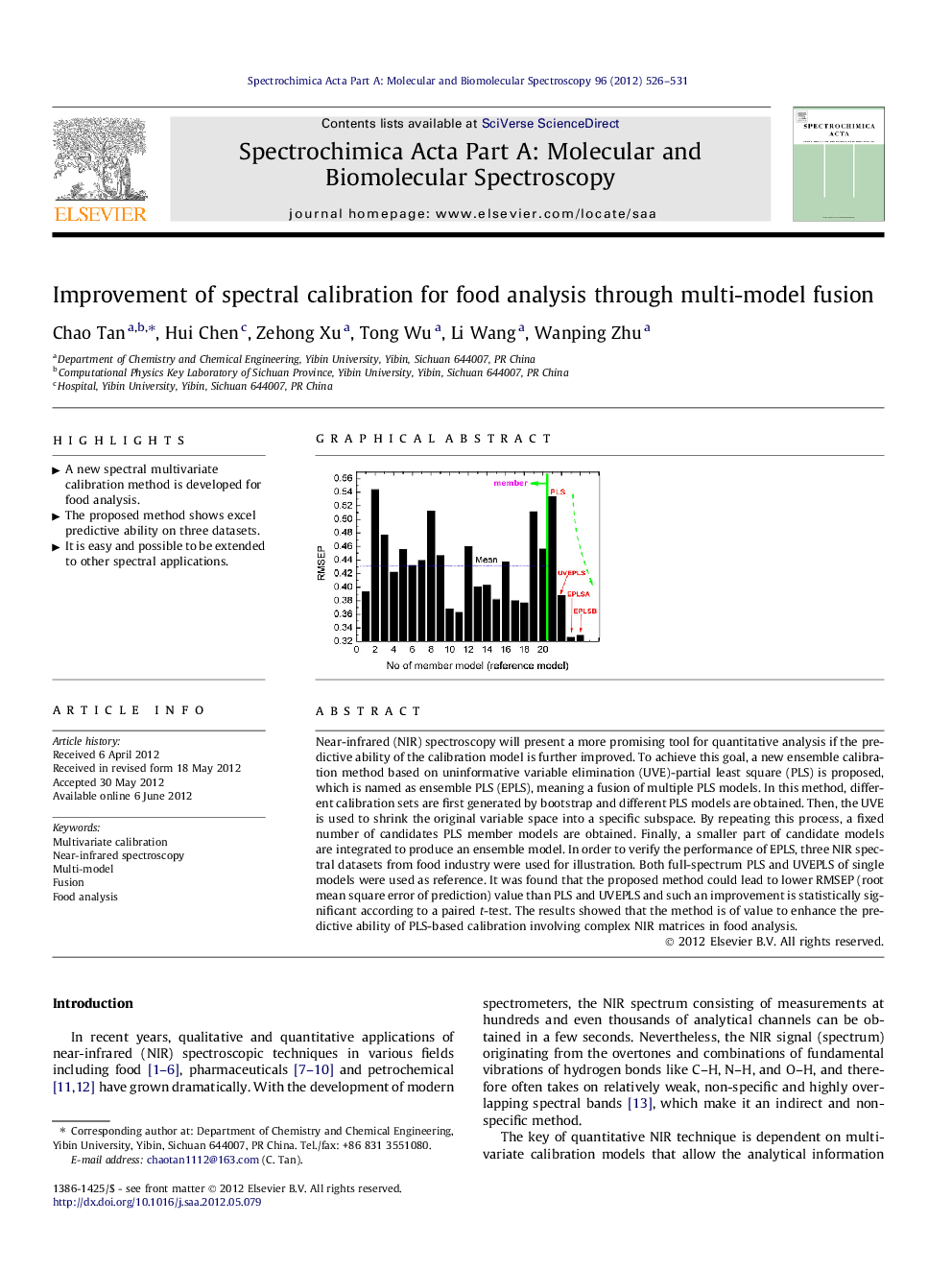| Article ID | Journal | Published Year | Pages | File Type |
|---|---|---|---|---|
| 1234439 | Spectrochimica Acta Part A: Molecular and Biomolecular Spectroscopy | 2012 | 6 Pages |
Near-infrared (NIR) spectroscopy will present a more promising tool for quantitative analysis if the predictive ability of the calibration model is further improved. To achieve this goal, a new ensemble calibration method based on uninformative variable elimination (UVE)-partial least square (PLS) is proposed, which is named as ensemble PLS (EPLS), meaning a fusion of multiple PLS models. In this method, different calibration sets are first generated by bootstrap and different PLS models are obtained. Then, the UVE is used to shrink the original variable space into a specific subspace. By repeating this process, a fixed number of candidates PLS member models are obtained. Finally, a smaller part of candidate models are integrated to produce an ensemble model. In order to verify the performance of EPLS, three NIR spectral datasets from food industry were used for illustration. Both full-spectrum PLS and UVEPLS of single models were used as reference. It was found that the proposed method could lead to lower RMSEP (root mean square error of prediction) value than PLS and UVEPLS and such an improvement is statistically significant according to a paired t-test. The results showed that the method is of value to enhance the predictive ability of PLS-based calibration involving complex NIR matrices in food analysis.
Graphical abstractFigure optionsDownload full-size imageDownload as PowerPoint slideHighlights► A new spectral multivariate calibration method is developed for food analysis. ► The proposed method shows excel predictive ability on three datasets. ► It is easy and possible to be extended to other spectral applications.
